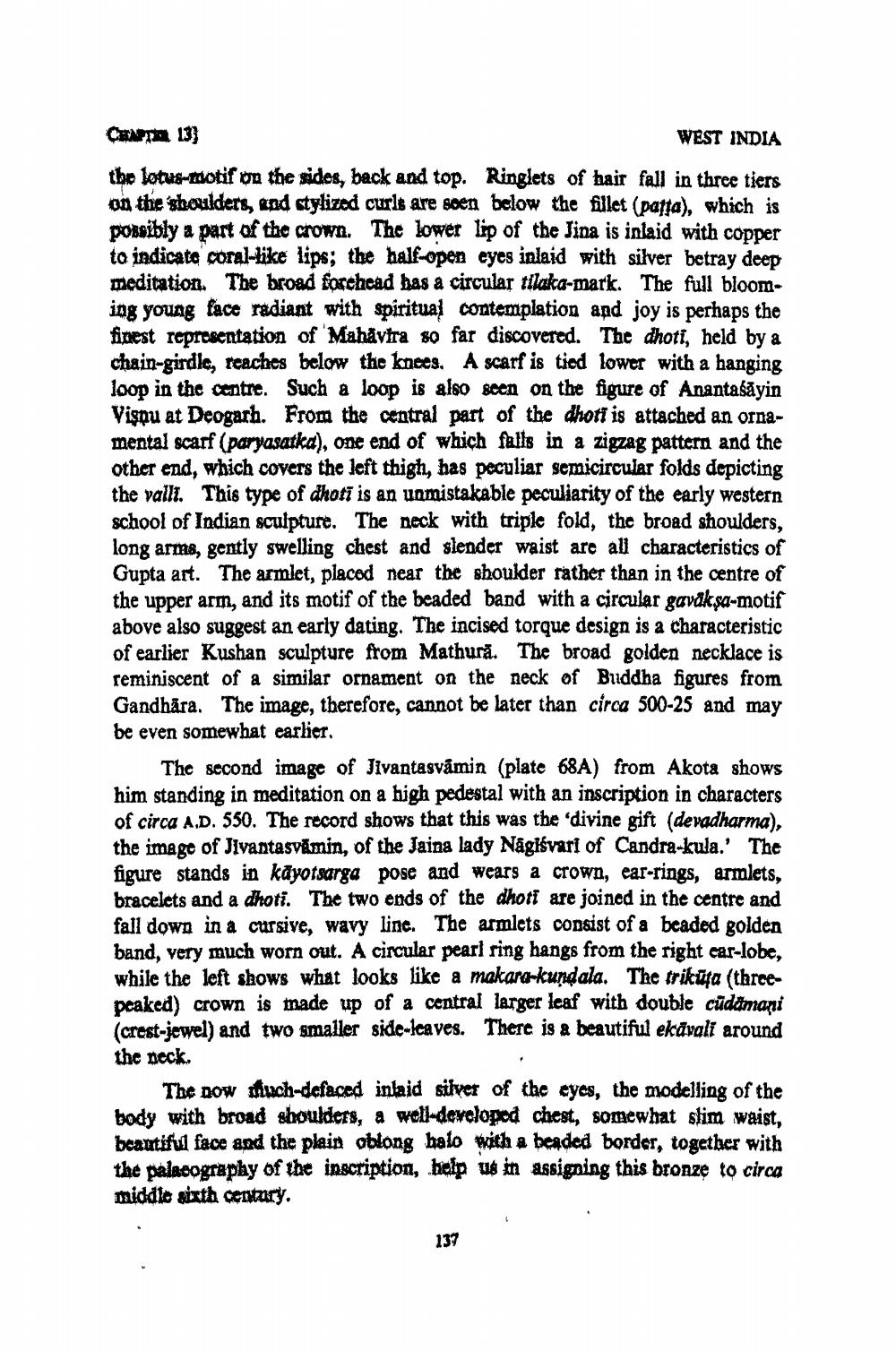________________
CHAPTER 13)
WEST INDIA the lotus-motif on the sides, back and top. Ringlets of hair fall in three tiers on the shoulders, and stylized curls are soen below the fillet (patta), which is possibly a part of the crown. The lower lip of the Jina is inlaid with copper to indicato coral-like lips; the half-open eyes inlaid with silver betray deep meditation. The broad forehead has a circular tilaka-mark. The full blooming young face radiant with spiritual contemplation and joy is perhaps the finest representation of Mahavtra so far discovered. The dhoti, held by a chain-girdle, teaches below the knees. A scarf is tied lower with a hanging loop in the centre. Such a loop is also seen on the figure of Anantaśāyin Vispu at Deogarh. From the central part of the dhoti is attached an ornamental scarf (paryasatka), one end of which falls in a zigzag pattern and the other end, which covers the left thigh, has peculiar semicircular folds depicting the vallt. This type of dhoti is an unmistakable peculiarity of the early western school of Indian sculpture. The neck with triple fold, the broad shoulders, long arms, gently swelling chest and slender waist are all characteristics of Gupta art. The armlet, placed near the shoulder rather than in the centre of the upper arm, and its motif of the beaded band with a circular gavaksa-motif above also suggest an early dating. The incised torque design is a characteristic of earlier Kushan sculpture from Mathură. The broad golden necklace is reminiscent of a similar ornament on the neck of Buddha figures from Gandhåra. The image, therefore, cannot be later than circa 500-25 and may be even somewhat earlier.
The second image of Jivantasvámin (plate 68A) from Akota shows him standing in meditation on a high pedestal with an inscription in characters of circa A.D. 550. The record shows that this was the divine gift (devadharma), the image of Jivantasvamin, of the Jaina lady Nágióvart of Candra-kula.' The figure stands in kayotsarga pose and wears a crown, ear-rings, armlets, bracelets and a dhoti. The two ends of the dhoti are joined in the centre and fall down in a cursive, wavy line. The armlets consist of a beaded golden band, very much worn out. A circular pearl ring hangs from the right car-lobe, while the left shows what looks like a makana-kundala. The trikuga (threepeaked) crown is made up of a central larger leaf with double cudamani (crest-jewel) and two smaller side-leaves. There is a beautiful ekávali around the neck.
The dow shuch-defaced inlaid silver of the eyes, the modelling of the body with broad shoulders, a well-developed chest, somewhat slim waist, beautiful face and the plain oblong balo with a beaded border, together with the palacography of the inscription, help us in assigning this bronzę to circa middle sixth century.
137




